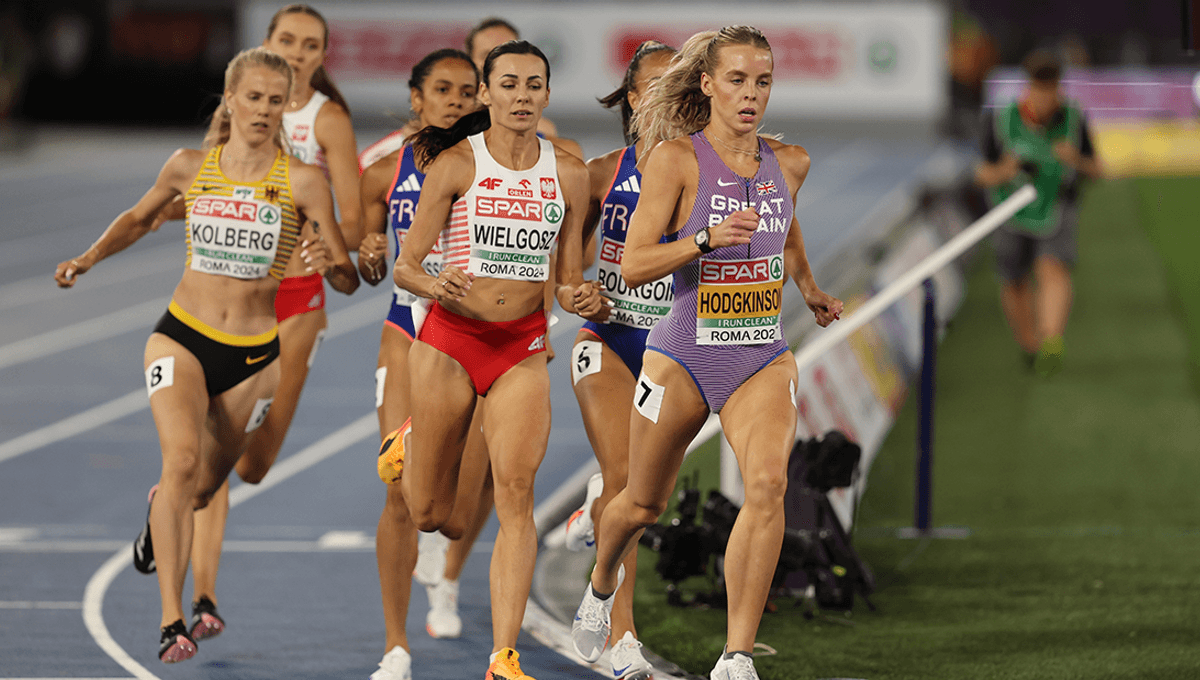
If you’ve ever watched any track and field events, horse racing, indoor cycling, or (shudders) baseball, you may have noticed that they all run in a counter-clockwise direction. Why is this, and why does it appear to be the standard worldwide?
While the tradition has not been continuous – for instance, Oxford and Cambridge runners ran clockwise well into the 1940s – the anticlockwise path has been around for a long time, with runners in Ancient Greece and charioteers in Ancient Rome all going in the anticlockwise direction.
“Legend has it that the chariot races at Rome’s Circus Maximus stadium in the sixth century [BCE] were traditionally run clockwise until an unlucky chariot racer accidentally hit emperor Nero in the check near the whip,” a review on the topic explains.
“The charioteer was immediately executed by Nero and the subsequent day all races were run on [the] opposite track, i.e. counterclockwise, it might have been an arbitrary decision but became a tradition over time. What supports this tradition is the fact that the Circus was overlooked by the emperors on the Palatine hill, so the finishing line was on the eastern side of the north, where the spina ended.”
As discussed above, the anticlockwise direction has not simply continued since then, with various events also run in the clockwise direction. Others have suggested – pretty outlandishly – that the direction is the result of the Coriolis effect.
“Because of the effect of the Earth’s rotation, an athlete running anti-clockwise will have a slight advantage, resulting in a faster time,” one person attempts an explanation, in the top Google result (at time of writing) for why runners travel in the anticlockwise direction.
“In the Southern Hemisphere, this effect is reversed but, as the sport grew up in the Northern Hemisphere, anti-clockwise races have remained, despite the international status of athletics. Evidence of this phenomenon is that none of the current world track records have been set south of the equator. The question is, if the World Championships are ever held in the Southern Hemisphere, would the IAAF [International Association of Athletics Federations] decide that track events should be run in the opposite direction?”
This might sound plausible, but there’s little evidence that this effect would improve people’s running times, and plenty of examples of people from the Southern Hemisphere outperforming their northern competitors. In fact, making people run in the clockwise direction in the Southern Hemisphere would probably damage their performance just as much as people from the Northern Hemisphere. This is because most people are right-side dominant, and it helps to have the dominant leg doing (slightly) more work as you turn.
“This gives them an advantage when running around a track counter-clockwise, because it allows for their more powerful leg to remain on the outside, facilitating the turns,” the review continues. “When running counter-clockwise, you will filch longer strides with your right leg – which allows for more propulsion and speed on the turns.”
While the decision to run counterclockwise may not have been expressly because of this, there is a small amount of evidence that humans prefer to run in this direction.
“We tested the spontaneous behavior of 13 human adults required to run around a circle in an empty, symmetrical space, as a function of starting position (from the left, the center, or the right), and gaze direction (to one of five targets going from left to right),” one small study explains.
“A clear significant overall tendency to turn counterclockwise across all conditions was observed. This was particularly striking when the participants were required to start from the center position and look straight ahead before starting, with more than 80 percent of the participants turning counterclockwise in this perfectly symmetrical condition. Starting position, gaze and head direction modulated the bias, without masking the counterclockwise tendency.”
Another idea is that the counterclockwise direction looks more pleasing to the audience, who get to watch athletes travel from left to right on the finish line, the direction speakers of many languages are used to in reading.
While tradition and right-side dominance may play a part, standardization plays a huge role in the otherwise quite arbitrary decision. Once a direction has been picked, it is best for equipment etc. to be standardized, meaning that everybody is training for the same thing and are not unfairly disadvantaged by having to run in the opposite direction.
Source Link: Why Do Runners Race In An Anti-Clockwise Direction?